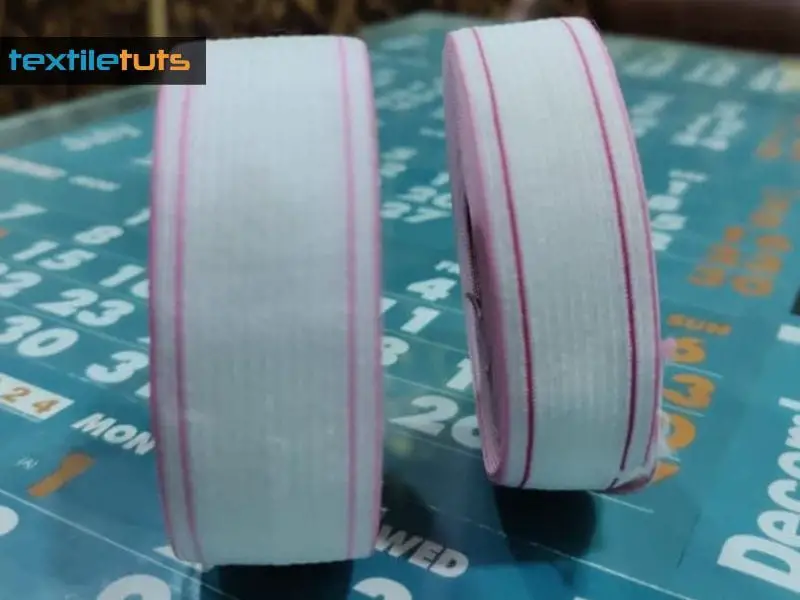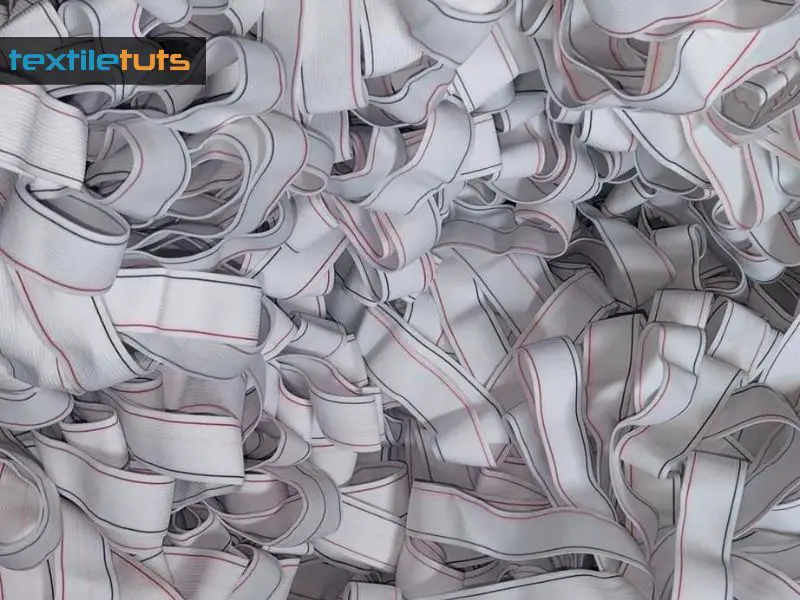Does Elastic Shrink? The Science of Elastic
Elastic materials have been used for centuries in various forms and industries, from clothing to construction. With its unique ability to stretch and return to its original shape, elastic has become an essential component in many everyday products. However, there has been a long-standing question surrounding this versatile material – does elastic shrink?
Yes, elastic can shrink when subjected to high heat, such as using a clothing iron on a steam setting. The application of heat causes the material that constitutes the elastic waistband to undergo shrinkage, tightening the elastic.
In this article, I will delve deeper into the topic of elastic shrinkage and explore the science behind its behavior. So, if you’ve ever wondered about the truth behind elastic shrinkage, this article is for you.
Elastic Shrinkage: Is It Possible?
Elastic can undergo shrinkage when exposed to high temperatures. Heat can actually harm elasticity and diminish its elasticity and durability. In some cases, hot water can even weaken the rubber in certain types of elastics to the point where it loses its ability to snap back or retain its springiness.

So, exercise caution when using heat to shrink elastic, as it may have negative effects on its overall quality and lifespan. Different types of elastic materials may respond differently to heat and shrinkage.
For example, highly elastic yarns generally shrink by about 20%. Additionally, when attempting to shrink fabric with elastic, it is important to consider the presence of elastic, as boiling water can be harsh on it and potentially cause damage.
Conditions that May Cause Elastic to Shrink
Elastic materials, such as elastic bands commonly used for clothing or other elastic fabrics, have the inherent property to stretch and return to their original size and shape. However, over time and under certain conditions, elastic can indeed shrink or lose its elasticity.
Here are some factors that can cause elastic to shrink or degrade:
Heat Exposure
High temperatures can damage the elastic fibers. For example, exposure to a hot dryer cycle or hot water during washing can cause the elastic to lose its stretchiness and even shrink.
Chemical Exposure
Chlorine bleach, harsh detergents, and other chemicals can break down the fibers that make them elastic and stretchy. Over time, this can lead to shrinkage or a loss of elasticity.
Ultraviolet Light
Elastic that is exposed to sunlight for extended periods can become brittle and less stretchy. UV rays can damage the material, leading to shrinkage.
Physical Stress
Constant stretching and pulling can wear out elastic. Materials with elastic properties are meant to return to their original size but can lose this ability if they are overstretched or subjected to stress repeatedly.
Time and Usage
With normal wear and tear over time, the elastic fibers can become fatigued and lose their ability to snap back, which may be perceived as shrinkage.
Quality of the Elastic
Not all plastics are created equal. Some may be more resistant to shrinkage and degradation than others. Higher-quality elastics often have better resistance to the factors mentioned above.
Improper Laundering
Following the correct laundering instructions is crucial for maintaining the integrity of elastic. Washing or drying with too much agitation, or at high temperatures, can cause the elastic fibers to deteriorate and shrink.
Types of Elastic and Their Shrinkage Characteristics
There are several types of elastic, each with their own unique characteristics, including shrinkage properties. Shrinkage refers to the reduction in size of the elastic, usually after washing or exposure to heat. It’s important to consider the shrinkage characteristics when selecting an elastic for a particular application to ensure that the garment maintains its fit over time.

Here are some common types of elastic and their shrinkage characteristics:
Braided Elastic
Characterized by distinctive lengthwise, parallel ridges, the braided elastic is crafted through the intertwining of elastic strands. It narrows when stretched and is not recommended for applications where the elastic will be directly exposed to the skin, as it can become uncomfortable.
Shrinkage can occur with braided elastic, especially if it is subjected to high heat in the dryer, but overall, it has moderate shrinkage properties and tends to hold up well with repeated use and laundering.
Knitted Elastic
Knitted elastic is made by knitting the elastic fibers together, resulting in a lightweight, soft, and stretchy material. It’s generally more comfortable against the skin and can be used in direct contact. Knitted elastic usually has a good stretch recovery and is less likely to narrow when stretched compared to braided elastic.
It has low to moderate shrinkage. However, to minimize shrinkage and maintain the integrity of the elastic, it should be washed in cool or warm water and dried in a low-heat setting.
Woven Elastic (also known as no-roll elastic)
Being the strongest of the three woven elastic maintains its width even when stretched. The elastic fibers are interwoven to create a dense and durable material that is often used in waistbands and heavy-duty applications.
Woven elastic is also comfortable to wear directly against the skin. It generally has low shrinkage, so it maintains its size and elasticity well even after washing. However, as with all elastics, it’s best to avoid exposure to high temperatures to prevent potential shrinkage.
Clear Elastic (transparent or plastic elastic)
This elastic is a lightweight, stretchy tape that is often used in lightweight or sheer fabrics. It is less visible than fabric elastics, making it a good choice for garments where the elastic should not be noticeable.
Clear elastic tends to have higher shrinkage rates due to its plastic composition, which can react to heat. Care should be taken when laundering garments with clear elastic, using cool water, and avoiding the dryer or at least using a low-heat setting.
Rubber Elastic
Rubber elastic is made from natural or synthetic rubber and is known for its strong stretch and recovery properties. It is typically encased in fabric to prevent direct contact with the skin.
Natural rubber elastic can have significant shrinkage particularly if exposed to heat, oils, or chlorine, so it may not be the best option for swimwear or items requiring high durability in challenging conditions.
Specialty Elastics
There are also specialty elastics designed for specific applications, such as lingerie elastic, swimwear elastic, and elastic with drawstring functionality. These elastics have varied shrinkage characteristics depending on their composition and intended use.
For example, swimwear elastic is designed to be chlorine and saltwater-resistant and usually has low shrinkage levels.
How to Prevent or Minimize Elastic Shrinkage?
Elastic shrinkage over time is inevitable due to the nature of elastic materials, but proper care can significantly slow down the process. The use of proper storage and cleaning techniques can help maintain the elasticity of materials such as elastic bands and waistbands. Additionally, avoiding excess stretching and exposure to heat can also help mitigate the effects of elastic shrinkage. However, it’s important to note that no matter what precautions are taken, elastic materials will still experience some degree of shrinkage over time. As the saying goes, “elastic does bylt shrink.

Here are some steps and best practices to prevent or minimize elastic shrinkage:
Read the Care Labels
Before washing or drying any garment, especially those with elastic fibers, always check the manufacturer’s care labels for specific instructions on how to handle the material.
Use Cold Water for Washing
Elastic materials are best washed in cold water, as high temperatures can break down the fibers and cause shrinkage. Warm water can sometimes be used for heavily soiled garments, but hot water should be avoided.
Gentle Cycle or Hand Wash
Use the gentle cycle on your washing machine or opt to hand wash the garment. Aggressive washing cycles can overstretch elastic fibers and lead to shrinkage.
Avoid Chlorine Bleach
Chlorine bleach can weaken elastic fibers. If you must use bleach, opt for non-chlorine, color-safe bleach, and use it sparingly.
Use a Mild Detergent
Harsh detergents can deteriorate elastic fibers. Choose a mild detergent that is appropriate for delicate fabrics.
Do Not Wring or Twist
After washing, avoid wringing or twisting the garment to remove excess water as this can damage the elastic fibers. Instead, gently squeeze out the water or lay the garment flat on a towel and roll it up to absorb the moisture.
Air-Dry When Possible
High heat from dryers can cause elastic to shrink and lose elasticity. It is best to air-dry elastic-containing garments by laying them flat or hanging them up to avoid stretching. If you must use a dryer, use the lowest heat setting or the “air only” option.
Avoid Direct Sunlight
When air-drying, avoid placing elastic garments in direct sunlight, as UV radiation can degrade the elastic over time.
Iron with Care
If you need to iron garments with elastic fibers, do it on a low heat setting and without steam, as heat can damage the elastic. Use a pressing cloth to protect the garment.
Store Properly
Avoid hanging elastic garments on hangers for extended periods, as this can cause the elastic to stretch out. Instead, fold them and store them in a drawer.
Conclusion
Elastic can shrink under certain conditions. However, the amount of shrinkage depends on various factors such as the type of elasticity and the method of care. You just need to follow proper washing and drying instructions for elastic garments to prevent excessive shrinkage.
Knowing how to properly care for elastic can help extend its lifespan and ensure a comfortable fit. So, yes, elastic may shrink, but with the right knowledge, we can prevent it from causing any inconvenience.

